If you fancy sampling some traditional English dishes the next time you’re able to visit London, try one or more of these staunch favourites!
Roast Beef and Yorkshire Pudding
Traditionally eaten on a Sunday, this dish is so English that the French sometimes refer to us as les Rosbifs. It even topped a poll of great British icons – ahead of the Queen and the BBC!
Accompanying the beef are roast potatoes and a selection of vegetables: carrots, peas, Brussels sprouts, cauliflower cheese, cabbage, broccoli, etc., collectively known as “all the trimmings”. If you go all in, you could even get your 5 a day in one meal! Covering your meal in lashings of gravy (using the juices from the meat) is, of course, a must, and for those who like a little kick, horseradish sauce is the usual condiment to beef. You could compare the whole meal to a slightly less grand Christmas dinner.
There are two strands to the origins of this dish, one going back to the 1700s when families would put the meat in the oven while they got ready for church. They’d add the vegetables just before leaving, and it would all be ready on their return. The other theory goes right back to medieval times (pre-15th century) when serfs working all week for their master would assemble on a Sunday after church to practise their battle techniques and were rewarded with a meal of spit-roasted oxen.
So what is a Yorkshire pudding? The closest thing in America would probably be a popover, but “Yorkshires” are almost exclusively savoury. Made from a pancake mix in a very hot oven, they rise to be the Queen of the plate to accompany the beef as King. The Royal Society of Chemistry suggested in 2008 that a Yorkshire pudding isn’t a Yorkshire pudding if it is less than four inches tall!
Yorkshire puddings are believed to have originated sometime in the 18th century when cooks from the north of England made use of the dripping from the meat. Originally known as dripping pudding, they were first served as a starter to help fill people up so they didn’t eat as much of the more expensive main meat dish. Even by itself, the mighty Yorkshire pudding generally features in top 10 polls of Britons’ favourite things about their country. The same mix can also be used to make another traditional English dish with sausages known as Toad in the Hole. This was also used in poorer households to make the meat dish go further.
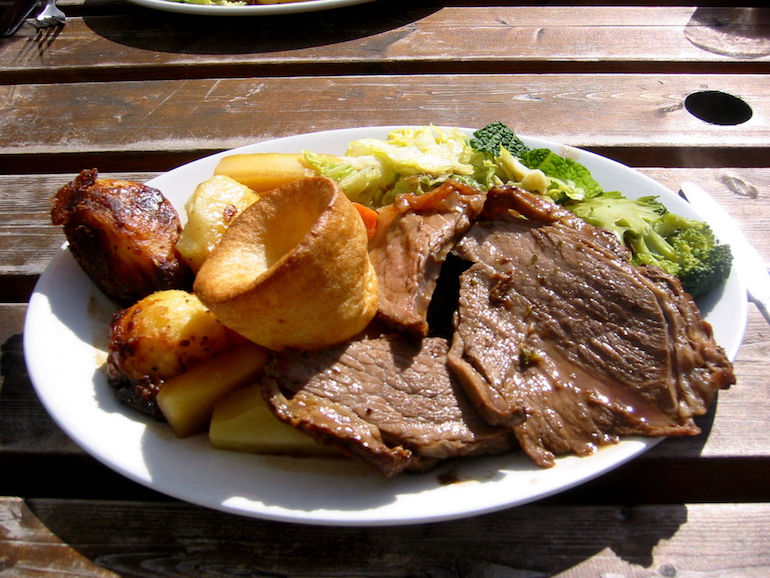 English Sunday lunch with roast beef, roast potatoes, vegetables and Yorkshire pudding. Photo Credit: © Jeremy Keith via Wikimedia Commons.
English Sunday lunch with roast beef, roast potatoes, vegetables and Yorkshire pudding. Photo Credit: © Jeremy Keith via Wikimedia Commons.
Bubble and Squeak
This breakfast dish is made with the shallow-fried leftover vegetables from the Sunday roast dinner. The main ingredients are potato and cabbage, but carrots, peas, sprouts, or any other leftover vegetables may be added. The chopped veg is fried in a pan together with mashed potatoes or crushed roast potatoes until the mixture is well-cooked and brown on the sides. Its name comes from the bubbling and squeaking sounds cabbage makes during the cooking process.
This was another dish designed to make food go further for poorer families, but is also relevant today when more of us are looking to avoid food waste. The earliest known recipe was in Mrs Rundell’s A New System of Domestic Cookery in 1806.
In Scotland, they have an equally wonderfully named dish called Rumbledethumps, which is very similar and likewise, Colcannon in Ireland also consists of cabbage and potato.
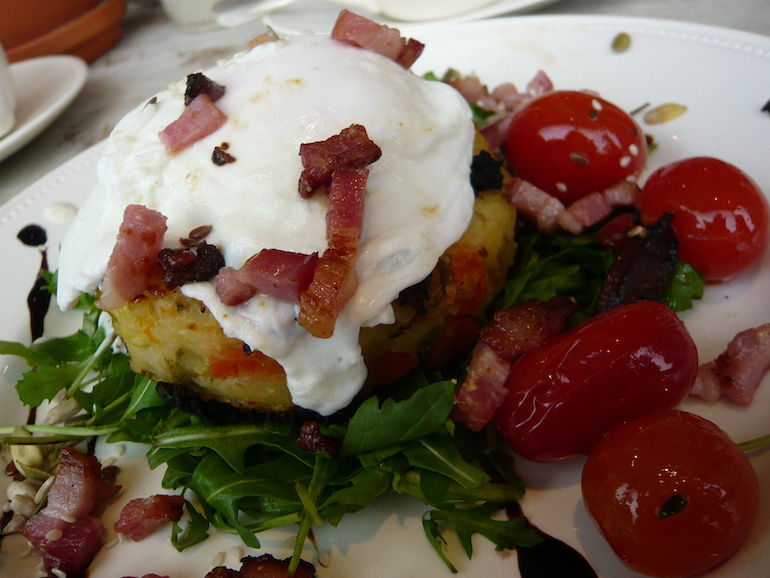 Bubble and squeak topped with a poached egg. Photo Credit: © WordRidden via Wikimedia Commons.
Bubble and squeak topped with a poached egg. Photo Credit: © WordRidden via Wikimedia Commons.
Full English Breakfast
For a completely English culinary day, you could have your Roast Beef for lunch and your Fish and Chips for dinner, but you would start with a Full English Breakfast. If you’re staying in a hotel, most will probably provide this service, or else you could tap the expertise of a London Blue Badge Tourist Guide to learn about some of the best cafes in town specialising in this morning feast.
Typically you would start with bacon, egg, sausages and toast and build from there. Mushrooms, baked beans, tomatoes, and if you’re throwing caution to the wind, maybe even fried bread could be added to your rather large plate. Some cafes will also serve chips (fries), but that’s not very authentic. Increasingly, with the food revolution of the last couple of decades (and London’s food scene changing beyond recognition, it must be said), there are hundreds of trendy cafes serving the likes of smashed avocado, and also a reinvented full English with a focus on quality local ingredients.
A less gentrified experience would have you enjoy your cooked breakfast at a “greasy spoon”, basically a no-frills diner where you will more than likely be surrounded by builders and local characters. Each one of the other three countries of the UK (Scotland, Wales and Northern Island) have their own variation of this breakfast and obviously replace the “English” with their country (in Northern Ireland it’s an “Ulster Fry”). The variations include different types of sausage and bread.
Despite being largely considered a working-class dish today, it was actually the landed gentry who began the tradition of a large cooked breakfast to show off their wealth as early as the 1300s.
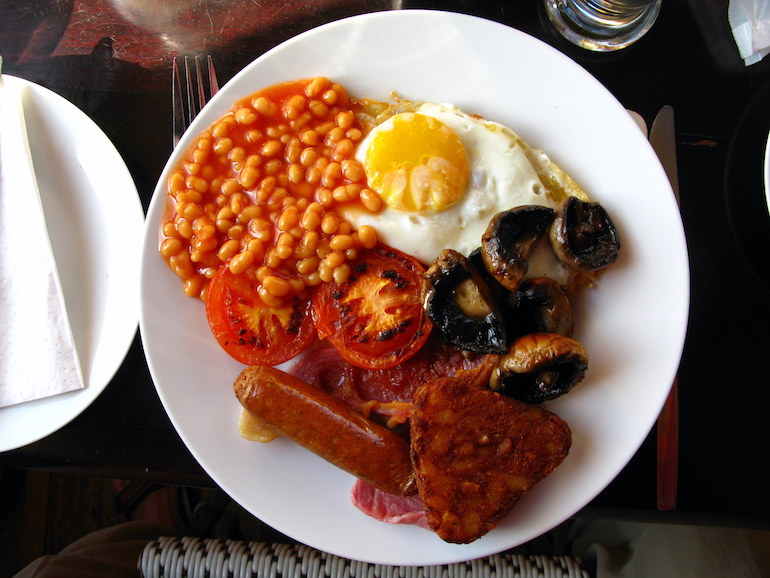 Full English breakfast. Photo Credit: © Joadl via Wikimedia Commons.
Full English breakfast. Photo Credit: © Joadl via Wikimedia Commons.
Meat Pies
In the US they say “as American as apple pie”, but when you hear people talking about pies in England, they’ll generally be savoury and probably contain meat. Steak and Ale, Steak and Kidney, Mince and Onion, Chicken and Mushroom, take your pick (there are even veggie options!).
Most pubs will serve them. One of my favourites for pies is The Grapes in Limehouse, with a wonderful location on the River Thames and owned, believe it or not, by Gandalf himself, Sir Ian McKellen.
Pies may come whole or as slices if homemade. Sometimes they’ll have puff pastry, but more often shortcrust. Some just have a pastry top, but personally I’d favour the fully enclosed pie. A variation of this is the Cornish Pasty (with the “a” pronounced like it is in apple, not like in the word for an Englishman’s complexion!) from the county of Cornwall in southwest England. These came about when the tin miners needed a meal to take down into the mines. The pastry effectively acted as “Tupperware”, but it then became the norm to eat the whole thing.
Pies usually come with mash potato, but if you’d prefer chips (fries), that shouldn’t be a problem. Just make sure to get plenty of gravy if you’re going to do it properly.
Pies can trace their history back to the Greeks and Romans (and possibly even the Egyptians), but few countries embrace them as wholeheartedly as England (though the Australians also love their pies).
For a truly English experience, take in a football match and grab yourself a half-time pie (and by football, we mean the one where you use your feet and no helmets are involved!) After all, where better to see a match than in the country that invented the beautiful game now played in virtually every nation on the planet.
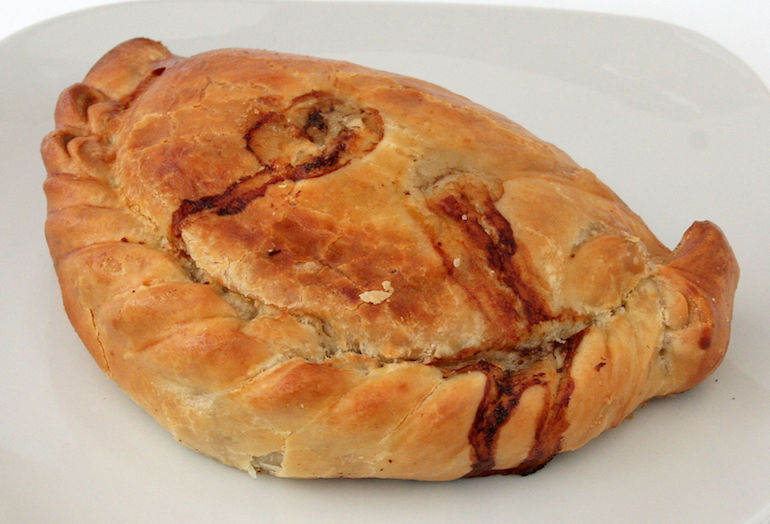 Cornish Pasty. Photo Credit: © David Johnson via Wikimedia Commons.
Cornish Pasty. Photo Credit: © David Johnson via Wikimedia Commons.
Spotted Dick
Yes, we really have a dessert with this name! Although in more PC quarters it may be known as spotted dog (though no less confusing to be honest!)
Spotted dick is traditionally made with suet and dried fruit (currants or raisins) and served with thick, hot custard. The spotted part clearly comes from the dried fruit; the rest of the name simply, and entirely innocently, came from terms for pudding.
With the dawn of a much more sophisticated food scene in recent years, it may take a little bit of hunting to track down this “old school” school dinners favourite. Heinz, however, do a canned version if you want to take home a tasty and slightly amusing souvenir!
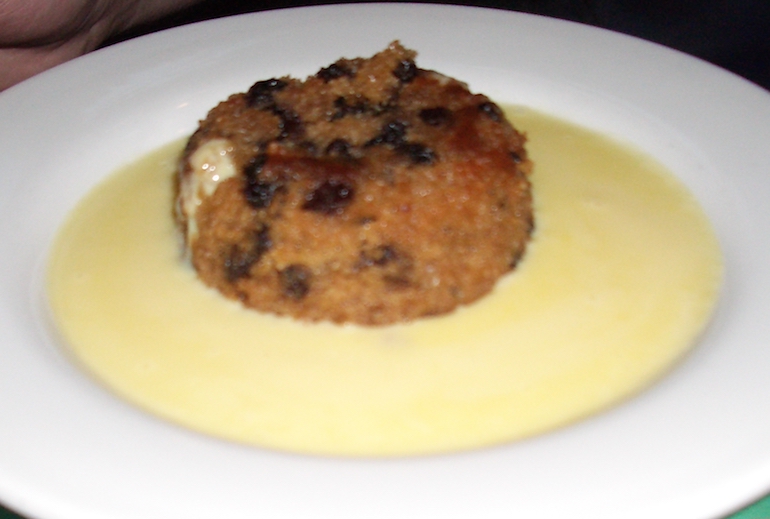 Spotted Dick and custard. Photo Credit: © Justinc via Wikimedia Commons.
Spotted Dick and custard. Photo Credit: © Justinc via Wikimedia Commons.
Eton Mess
While Spotted Dick is a perfect winter warmer, Eton Mess is most definitely a summer affair; a combination of meringue, cream and red summer fruits (strawberries, raspberries etc).
It takes its name from the very famous private boys school Eton, where 20 of the 59 Prime Ministers of the UK were educated, as well as Prince William and his brother, Harry, and where the dish is said to originate from. The mess part is possibly just down to its appearance!
Hopefully, you’re now keen to pack your cases and finally take that trip to London you’ve always dreamed of, and of course, try a few of the local delicacies whilst you’re here. You may also want to take advantage of the best-qualified guides in the country and book a London food tour with a Blue Badge Tourist Guide to make it the trip of a lifetime. Bon voyage and bon appetit!
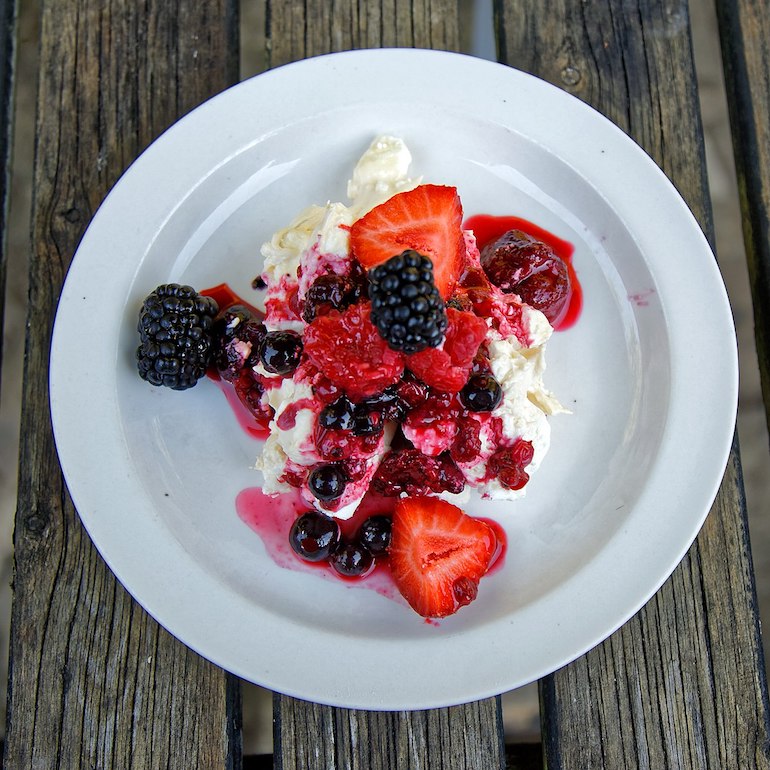 Eaton Mess pudding. Photo Credit: © Acabashi via Wikimedia Commons.
Eaton Mess pudding. Photo Credit: © Acabashi via Wikimedia Commons.



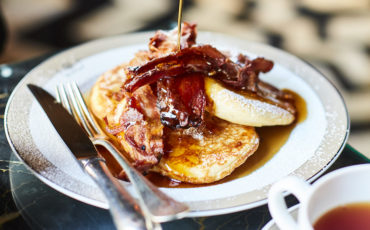



Leave a Reply